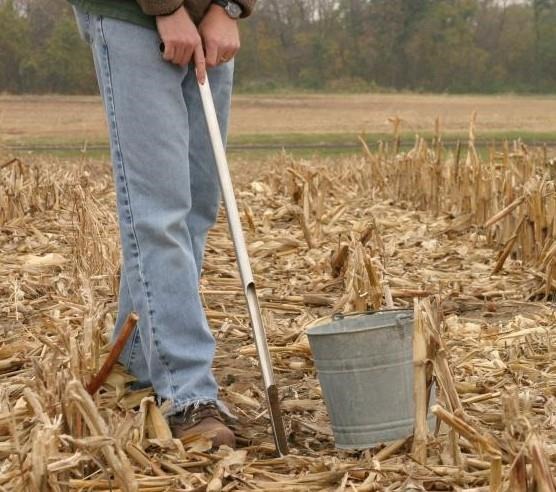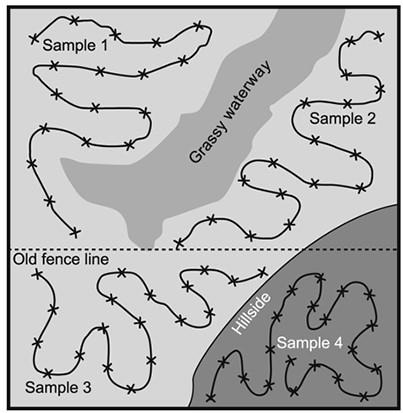By Greg Tylka
Soybean producers and agribusiness professionals who advise them should be aware that the soybean cyst nematode (SCN) is a major yield-reducing pathogen in Iowa. The pest is widespread throughout Iowa and much of the Midwest. Most of the resistant soybean varieties that were grown for decades to maintain profitable yields and keep SCN numbers in check have lost much of their effectiveness. Also, SCN reproduction likely was much greater than normal in fields where soybeans were grown in 2021 due to the hot and dry growing season, making the situation worse.
Checking the situation in your fields
To assess the SCN situation in a field, collecting soil samples in the fall is advised. Samples collected from fields where soybeans were grown in 2021 will reveal if SCN is present and at what level. Sampling fields in the fall that are slotted for soybean production in 2022 will provide information about the yield potential of soybeans in those fields next year. Soil samples can be collected anytime after harvest until the soil freezes or is covered with snow.
Sampling guidelines
- Use a soil probe (Figure 1), not a spade, to collect soil cores.
- Collect 15 to 20 soil cores eight inches deep from every 20 acres.
- Collect multiple-core soil samples from management zones in the field, if possible (Figure 2).
- Combine the 15 to 20 cores from a sample area in a bucket, break up and mix the cores well, and then fill a soil sample bag with mixed the soil.
Where to send samples for processing
The Iowa State University Plant and Insect Diagnostic Clinic processes soil samples for SCN egg counts. The cost is $20 per sample for in-state samples and $25 per sample for out-of-state samples. The Nematode Sample Submission Form is available through the Extension Store and provides details about where to send the samples.
There also are numerous private soil testing laboratories in Iowa and surrounding states that process soil samples for SCN eggs. The SCN Coalition has a map of the names and locations of these labs online.
An Iowa State University Extension and Outreach publication, IPM 61, is available and provides guidance on how to interpret SCN soil sample results and compare results among different testing laboratories. Iowa State’s management recommendations based on soil sample egg counts in fields are available online also.
Managing SCN
Once a field is known to be infested with SCN, an integrated approach to manage the nematode is recommended. Farmers should grow SCN-resistant soybean varieties in rotation with nonhost crops, such as corn, and consider using nematode-protectant seed treatments on soybeans.
Soybean varieties with PI88788 resistance have lost much of their effectiveness because SCN populations in Iowa and surrounding states have become resistant to PI88788 resistance. Farmers should look for and grow resistant soybean varieties with the uncommon Peking resistance, which is very effective against SCN populations in most Iowa fields, providing high yields and suppressing nematode reproduction. There are not enough varieties with Peking SCN resistance for everyone to use, so farmers also should look for varieties with PI88788 resistance that are known to provide high yields and good SCN control. Such information is available at Iowa State’s SCN-resistant Soybean Variety Trial Program website and may be available from other university and commercial sources as well.
 Figure 1. Use a soil probe to collect 15 to 20 soil cores, 8 inches deep, from every 20 acres, then mix the cores in a bucket to comprise one sample.
Figure 1. Use a soil probe to collect 15 to 20 soil cores, 8 inches deep, from every 20 acres, then mix the cores in a bucket to comprise one sample.

Figure 2. Collect separate multiple-core soil samples from different management zones within a field to account for possible differences in SCN numbers among the areas of the field.
Source : iastate.edu